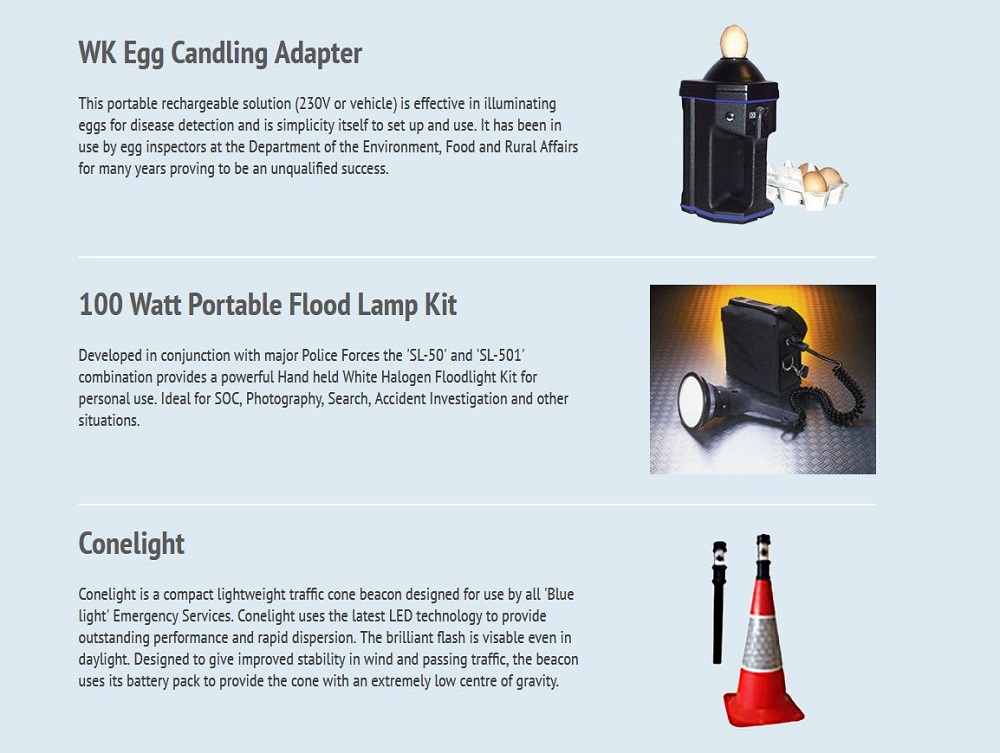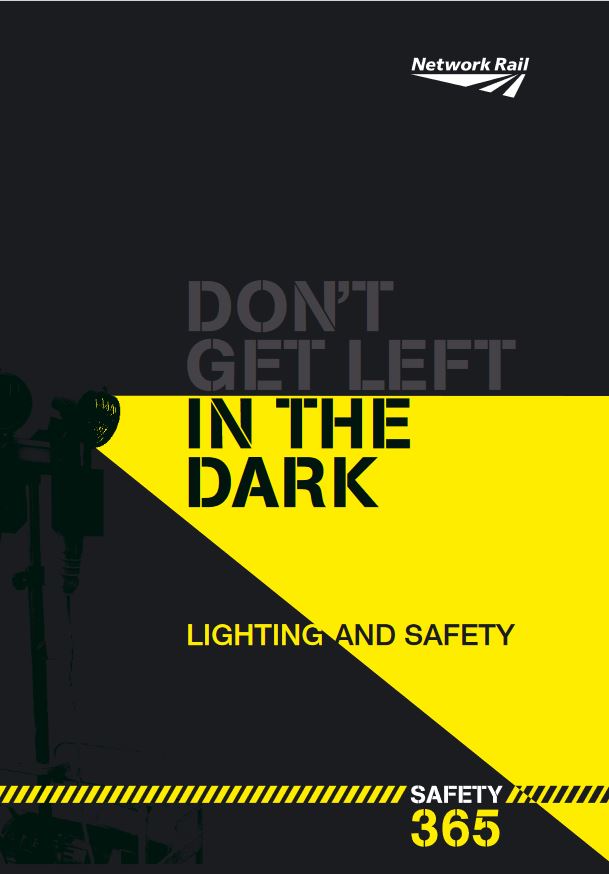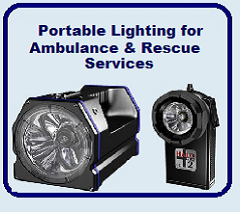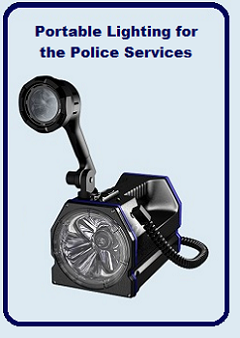Rail Industry
White Knight has been manufacturing rechargeable handlamps since1976.
They started with the ‘White Knight’ range of handlamps and later the White Knight Halo Plus Personal Signalling Lamps, professional halogen torches.
Halo Plus 2 Halogen Torch
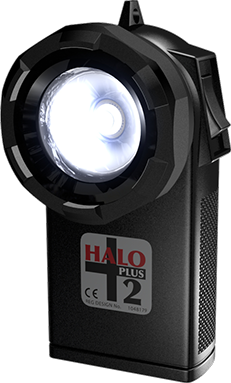 Halo Plus 2 Halogen Torch by White Knight – halogen torches designed and built to service the needs of both the professional services and industry:
Halo Plus 2 Halogen Torch by White Knight – halogen torches designed and built to service the needs of both the professional services and industry:
Compact for hand held daily use. Tough, highly flexible belt clip for hands-free operation
Ruggedly moulded in high impact plastic to withstand the toughest of conditions
High and low beam function with a unique interchangeable battery cassette for use with standard alkaline ‘C’ cells, or rechargeable Ni-Cd and Ni-MH batteries. The Halo Plus HP-2 Range of Personal Signalling Lamps features the latest advances in LED Technology. Each lamp features a high performance super bright LED Array in up to three colour combinations – red, green, blue, yellow and white. All colours conform to BS 1376 signal colours. Specialist colour requirements can be met.
The Halo Plus 2 lamp has been in production since 1990. It is used by the British, German and Swiss rail networks, as well as the Eurostar service and infrastructure companies.
Network Rail Approved Cert. No. PA/05/965
±7.5° viewing angleCan be viewed in sunlight
Long operational life – typically 60,000 hours
Each colour has 7 LED x 360° array
Coloured changeover switches
Long life fully protected Halogen Bulb
Robust weatherproof mouldings giving high mechanical strength
High resistance to shock and vibration
Halo HP-11 Signalling Lamps
 Halo HP-11 Signalling Lamps by White Knight provide guaranteed performance in non-hazardous situations, the HP-11 provides a reliable way forward for the security services and transport industries.
Halo HP-11 Signalling Lamps by White Knight provide guaranteed performance in non-hazardous situations, the HP-11 provides a reliable way forward for the security services and transport industries.
Delivers a constant 10,000 candlepower
Features a high/low beam option for use in low light applications
Interchangeable battery cassette provides 3 hours continuous light on one set of rechargeable 2.2 Ah batteries or 5 hours using standard alkaline batteries
Apart from the Network Rail approved signalling lamp used for train movement -shunting etc – White Knight also manufacture a sturdy range of lamps for other areas of the rail infrastructure including banksmans lamps, and other portable spotlights for long and short distance inspection work.
“Railway Bardic lamp” is now a generic term used to describe any portable signalling lamp that uses different colours. Although designed as signalling lamps, LED bardic lamps can be used as temporary headlights or tail lights on trains in an emergency, and most trains have a bracket for holding these lamps.
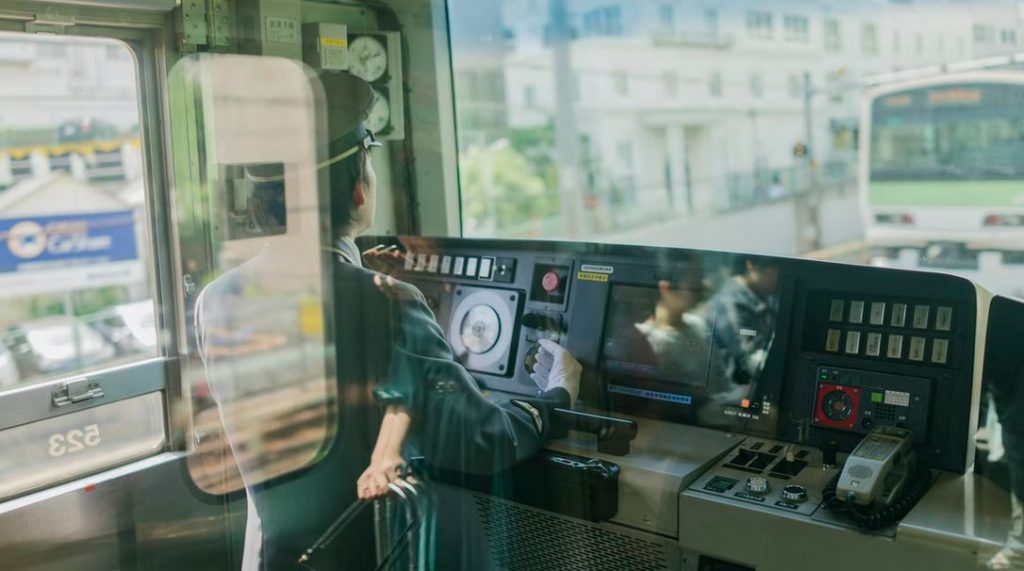
Lots of small children want to be train drivers, but what if you still want to drive trains when you’re an adult – what do you do?
How to Start
You do not require any formal qualifications to become a train driver in the UK, but applicants must be over 21 and face a host of online tests and psychometric assessments as well as a number of interviews. This process can take up to 6 months to complete. Becoming a train driver is an extremely popular profession and there can be up to 1,000 applicants for each vacancy.
Applicants will be assessed for the following skills:
- Concentration
- Observation
- Abilty to perform under pressure
- Customer service qualities
- Attention to detail
- Abiltiy to follow strict rules and safety procedures
- Equipment, computers and other device operating skills.
What Next?
Once employed as a trainee train driver it can take between 12 and 15 months to qualify, depending on the individual train operating company.
The course will consist of both practical and classroom-based exercises. Some of the areas you will be training on will be:
• Train driver rules and regulations
• Train handling
• Knowledge of traction
• Route knowledge
• Safety procedures
Apart from the training modules you will have to complete a set number of hours in the cab of a train, both accompanied and unaccompanied. These hours vary between TOCs but are usually between 200 and 255 hours.
What Do Train Drivers Earn?
One of the reasons train driver is such a popular occupation is the excellent salary.
A trainee train driver starts on about £25,000 but this increase quite dramatically to an average of around basic salary of around £48,500 pa, with some train operating companies offer well in excess of £55,000 for qualified train drivers.
Therre is the potential to earn even more in speacialist services such as Eurostar.
Before you rush off and apply for a job as a train driver, bear in mind that it is a stressful job which requires intenses concentration and also some very unsociable hours!

The recent visit from Storm Eunice once again made us aware of how vulnerable we are in the face of nature’s wrath. Eunice blew through the UK leaving a trail of devastation and destruction not seen for many years.
One of the hardest hit services was our rail network with all sorts of disruptions causing chaos across the country. Fallen trees, damaged power cables, damaged tracks, and debris on the lines – including trees, various items of garden furniture, trampolines and even the odd roof.
The job of clearing up and ensuring that our railways are running as safely and efficiently as possible is in the hands of Network Rail.
Their engineers and contractors maintain, repair, and improve our rail infrastructure around the clock in all weathers to make it possible for trains to run. In order to achieve this they are assisted by a fleet of seasonal track treatment machines and vehicles.
These vehicles include:
- Multipurpose vehicles (MPV)
- Snow and ice treatment trains (SITT)
The MPV and SITT both scrape ice off the conductor rail head (the top of the conductor rail) and can spray the rails with hot liquid anti-icer that prevents ice sticking to the conductor rail head.
- Winter development vehicle (WDV) used to blow hot air around the running rails – specifically around points and crossings – to melt snow and ice that is stopping the points from working. The WDV is also equipped with steam lances to melt the more built-up stubborn ice deposits.
- Snow ploughs can be fitted to the front of trains for removing snow
- Mini snow ploughs (MSPs) – owned by freight operating companies – clip on to the front of locos that are operated under contract to us, and as the name suggests, they’re the smallest of the ploughs. Their blade can be adjusted for snow depth but can’t usually cope with more than 18 inches.
- Small snow ploughs can fit to the front of passenger trains to clear up to eight inches of snow. These and our typical winter weather vehicles and procedures (see above) may not be enough to remove heavy snowfall though – that’s a job for our extreme weather fleet (our ploughs below and our snow blowers).
- SITT (plough – This can be added to the SITT (front and rear) if a significant snow fall has closed a third-rail route.
- Beilhack V plough and Independent snow plough are more robust ploughs for heavier snow
Snow blowers
Two snow blowers, based in Scotland, are fitted with propellers that cut through and blow away snow drift. A special hydraulic turntable within the machine makes it possible for the snow blower to turn around on its own if needed.
For more information read this article with some interesting pictures and videos on the Network Rail website.
According to the latest government data, about 29 percent of the UK train fleet still runs on diesel and freight trains run almost entirely on it.
The government claims it is on track “to meet the ambition of removing all diesel-only trains from the network by 2040”.
Electric trains emit 60 percent less carbon than their diesel counterparts, but only 42 percent of the UK rail network is currently electrified, according to official data. This leaves the UK far behind European neighbours, such as the Netherlands, where 76 percent of the network is electrified. Lumo’s new fully electric London-Edinburgh service launched in November.
Some train operators are transitioning via hybrid models. Porterbrook, in collaboration with Rolls-Royce recently announced a hybrid battery-diesel train for services in the Midlands run by Chiltern Railways.
Plans are also underway to produce trains that run on hydrogen. French train manufacturer Alstom is developing the UK’s first-ever fleet of new hydrogen trains, as opposed to rolling stock that has been remodelled.

A hydrogen-powered train was showcased at COP26 recently. Rail is already the lowest emission transport mode, but train operators are confident that hydrogen trains can improve on this.
Sadly, the recent surge in electricity prices has forced some electric-run trains to revert to diesel locomotives. Trade body Rail Freight Group (RFG) insists that this a temporary set-back and looks forward to more investment in electric locomotives.
The head of Britain’s Rail Industry Decarbonisation Task Force and railway safety authority RSSB has said “Britain is leading the world on setting clear targets to reduce carbon, and so it’s critical that all industries play their part”. “Rail is ahead of the curve on the decarbonisation agenda, and our report shows that we can align with the government’s policy for the UK economy to be net carbon zero by 2050. We will need to fully exploit electrification, hydrogen and battery power to make this happen, but we also need all transport sectors to fully comprehend the challenge of decarbonisation.”
There is no doubt the rail industry is working hard to achieve the target of being diesel-free by 2040, and at the moment the future is looking good.
Whatever the trains are running on, White Knight will still be making their reliable range of Lanterns and Signal Lamps for the Rail Industry.
White Knight have been manufacturing Network Rail approved signalling lamps for over 25 year and is best known for their range of rechargeable handlamps.
The White Knight range was developed after extensive research when a major train company expressed concern over the weight of the train driver’s bag, which was partly due to the weight of the old-fashioned Bardic Lamps. White Knight responded by designing and producing the hugely successful Halo personal signalling lamp. Not only was it significantly lighter than the original Bardic lamp, it was also much brighter.
White Knight’s Halo Plus torch is Network Rail approved (Cert. No. PA/05/965) and has been in production since 1990. It is used by the British, German and Swiss rail networks, as well as the Eurostar service and infrastructure companies.
White Knight is a market leader in the supply of specialised lamps to “Blue Light Services”, Rail Networks, Military and Public Utilities worldwide. White Knight holds BS EN ISO 9001 certification, and the company has also achieved a range of industry standards and certification.
As well as the Network Rail approved signalling lamps used for train movement and shunting etc, White Knight also manufacture a sturdy range of lamps for other areas of the rail infrastructure including banksman’s lamps, and other portable spotlights for long and short distance inspection work.
Other White Knight products include bespoke lamps for specific industries and applications.
Talk to the White Knight team for your specific portable lighting solutions or any rail lighting.
Network Rail have a vast array of situations where reliable lightiing is required and it is eessential to the health, safety and general comfort of staff at all places of work to ensure that effective, reliable lighting is used. The quicker and easier it is to see a hazard the
higher the likelihood of avoiding it.
Network Rail have produced an excellent pdf detailing their lighting requirements.
This pdf includes:
- an explanation of the different types of lighting
- considerations when choosing temporary lighting
- Lighting levels for different situations
- An explanation of Lux variations
It also offers some general guidance task lighting requirements
- Pedestrian access to/from work site, access along or between sites
- Site access points, loading/distribution areas, and tracking machines on/off site
- Localised work using small plant e.g., single sleeper replacement, rail head repair weld
- Large worksite multiple task linkable lighting towers
- S&T work location cabinets etc perception to detail required
View and download the Network Rail Lighting PDF
White Knight offer Network Rail approved hand-held railway signalling lamps. Advancements in technology have allowed us to improve the brightness, durability, battery life and overall weight of these lamps, as they continue to provide a vital service, even on our 21st century railways.
White Knight produce reliable and portable high powered illumination for the rail industry, ambulance and rescue, police and SOCO
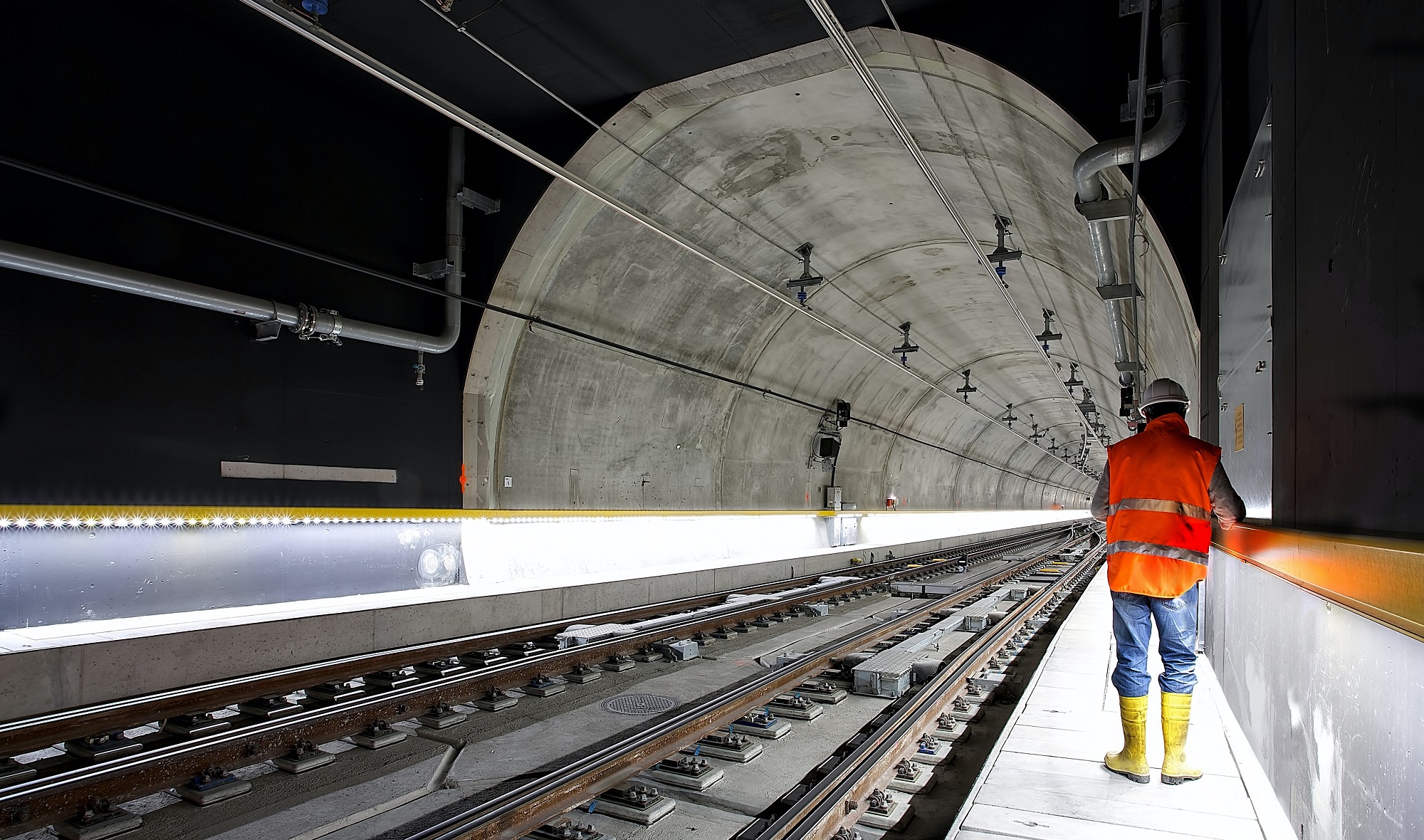 The HS2 Project has attracted controversy and dissent since it was first announced back in 2012.
The HS2 Project has attracted controversy and dissent since it was first announced back in 2012.
The cost of the project originally estimated at around 32.7bn when approved in 2012 has soared to£107.7bn
The Eastern Route has been killed off in in yet another controversy with some sources suggesting it is merely on hold while others seem adamant that it has been killed. Temporarily or permanently, the bottom line is there is just not enough money in government coffers to fund this part of the project.t the buffers next week.
The axing of the route, linking Birmingham with Nottingham, Sheffield and Leeds will save £40 billion.
At the same time another crisis has hit HS2 with Siemens Mobility taking the government to court over the awarding of a £2.8bn train building contract.
According to Siemens the contract was awarded to Hitachi and Bombardier after a process “shrouded in mystery”.
Siemens claim that the Hitachi/Bombardier joint venture was selected in spite of a failure to meet HS2 technical requirements, as well as the lack of consideration of the problems with Hitachi’s trains that led to widespread disruption across the UK rail network earlier this year.
Siemens are seeking an injunction to prevent the awarding of the train building contract to Hitachi and Bombardier, claiming that their own contract is the only one to fulfil HS2’s original requirements.
Back in June HS2 reached an out of court settlement with Spanish train manufacturer, Talgo, for similar issues.
In better news, Hartlepool dock is to be the beneficiary of over 100 new jobs thanks to HS2.
An old oil rig fabrication is set to become a factory for the manufacture of precast tunnel segments for HS2. 36,000 concrete segments will be produced at the site for tunnels running from Old Oak Common station to Green Parkway in London. The new factory is owned by PD Ports at Hartlepool Dock and will bring new skilled job opportunities to the local area.
HS2 claims to have created over 20,000 jobs and the with a completion date of approximately 2030 for the first phase, it is likely that many more jobs and many more controversies, missed deadlines and budget changes will take place.
In the 21st century “Bardic Lamp” is a generic term used to describe any signalling lamp in use on the railways.

Traditionally a “Bardic Lamp” was the name of a specific lamp made by British Chloride. The name “Bardic” now belongs to the electronic giant Honeywell, and is “dedicated to the design, manufacture and supply of products and systems which are used in making buildings safer around the world”
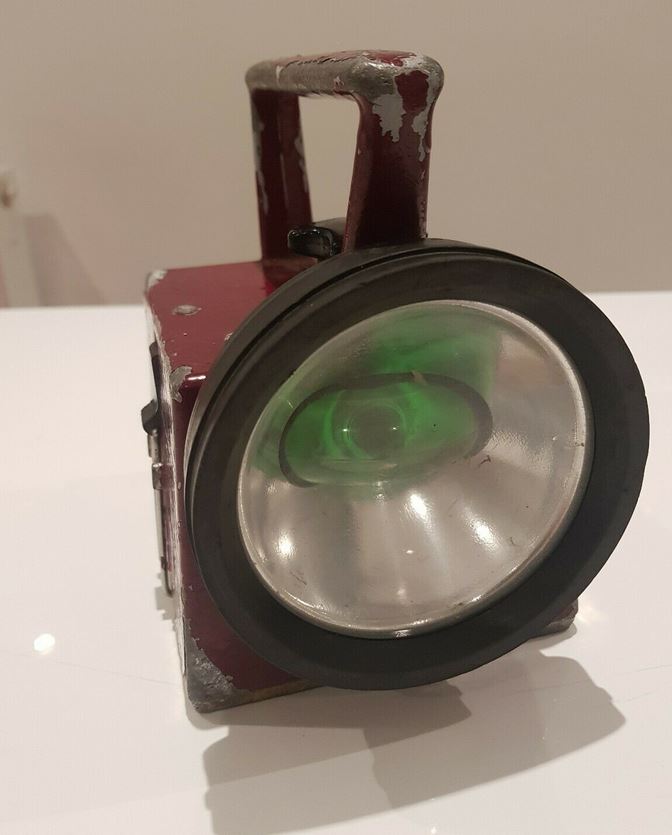
Referring to a hand-held signalling lamp as a Bardic lamp is similar to referring to a vacuum cleaner as a Hoover – it’s not quite accurate, but everyone knows what it means.
Hand held signalling lamps are still used in a similar fashion today. All that has changed, apart from the name, is the fact that the more modern versions are lighter, brighter and more durable. On the London Underground, Bardic lamps used to be placed on the stand on the offside console. Although the stand is still there it is no longer mandatory for the lamp to be placed there.
Although newer lighter “Bardic” lamps are now being manufactured, there are still a number of the original metal lamps to be found.
Bardic lamps are now used predominantly to signal the last train at night, and also to hold trains when necessary.
Most train staff carry a “Bardic” lamp as part of their regulation kit. In fact, the Network rail approved hand-held signalling lamp designed by White Knight, was done so at the request of a train operator who found the original lamps made the bags rather heavy.
Bardic lamps are carried so as to be available as emergency lighting on tracks, and also as a back up in case of failed lighting on the back or front of trains.
White Knight continues to improve hand-held railway signalling lamps. Advancements in technology have allowed us continuously improve the brightness, durability, battery life and overall weight of these lamps, as they continue to provide a vital service, even on our 21st century railways.
White Knight produce reliable and portable high powered illumination for the rail industry, ambulance and rescue, police and SOCO
 So, HS2 has been given the go-ahead! The first phase between London and the West Midlands has been given Royal Assent, ending four years of Parliamentary debates.
So, HS2 has been given the go-ahead! The first phase between London and the West Midlands has been given Royal Assent, ending four years of Parliamentary debates.
Construction of HS2 will begin within months after the £55.7 billion project was rubber-stamped, the government has confirmed.
The first phase of HS2 will run for 12 miles through Staffordshire as it passes Lichfield to join with the West Coast Main Line at Handsacre.
It is claimed that HS2 will create about 25,000 jobs during construction, and an additional 2,000 apprenticeships. There are suggestions that the wider economy could see growth of up to 100,000 jobs.
Read the details on gov.uk
There is still a lot of opposition with campaigners claiming it will cause irreversible damage to the environment. There is also the claim that the technology used by HS2 will be obsolete by the time it gets running by 2033.
Love it or hate it, it looks like finally happening
The Crossrail project is over 75% complete, and the final phases are moving along rapidly. To keep us up to date on what’s happening with Crossrail, Crossrail have produced regular videos detailing the most recent developments.
The most recent video sees Camilla Barrow, Project Manager, Railway Systems talks us through the track installation progress on the Elizabeth line which is due to open in December 2018.
Crossrail have a comprehensive collection of videos on youtube detailing its progress.
The Crossrail website also has some interesting news updates including information on Central station updates, the new trains being tested in Derby. Find out more about Ilford station’s revamped ticket hall, and the latest on Farringdon station.
All in all a fascinating look at Crossrail, even for those not in the industry


